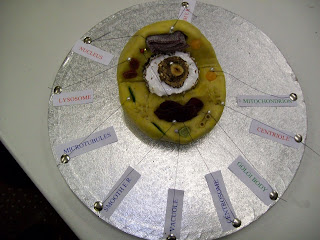 Our 4 "blood" samples
Our 4 "blood" samples 
 Placing the samples into the wells in the gel.
Placing the samples into the wells in the gel.
 Sample C showing clearly the red evil "gene"!!
Sample C showing clearly the red evil "gene"!!As Higher and Intermediate 2 are studying DNA we had a look at a technique similar to the one they use for DNA profiling. We were using electrophoresis to seperate out 4 different "blood" samples. Which one contains the evil red gene? The class loaded the 4 samples into a gel and then ran an electric current through them. The seperate parts of the "blood" samples travel through the gel at different rates. We found that sample C contained the evil red "gene"!

 Melissa
Melissa Conor (this had labels as well but we kept them off for the photo)
Conor (this had labels as well but we kept them off for the photo) Daria
Daria Georgina (along with a label about red blood cells)
Georgina (along with a label about red blood cells)

 Amy
Amy James
James


























 S1 are looking at water purification. Today they had a look at a child in Ethiopia, studied some of
S1 are looking at water purification. Today they had a look at a child in Ethiopia, studied some of











